




What is Liquid Measurement?
Liquid measurement is the amount of liquid a vessel or container holds and its measurement in standard units. This is also referred to as capacity or the volume of the vessel. The two most common units of measuring liquid are:
Millilitres
Litres
What is Millilitre?
A millilitre is the smallest metric unit that measures the smallest quantity of liquid and is equal to a thousandth of a litre. Hence, we can say 1 litre = 1000 millilitres. The figure below shows the 1000 millilitres of water in a jug.
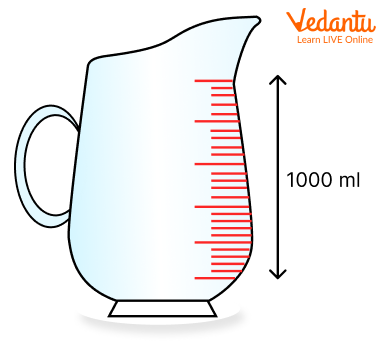
Jug with 1000 ml of water
A single raindrop contains about 1 millilitre of liquid.
20 drops of water make about 1 millilitre of liquid.
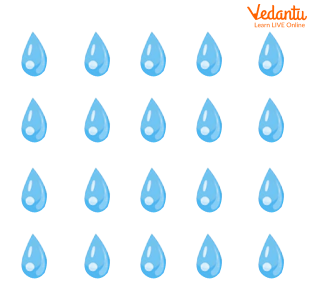
20 drops of water makes about 1 millilitre of liquid
One teaspoon of liquid makes about 5 millilitres.
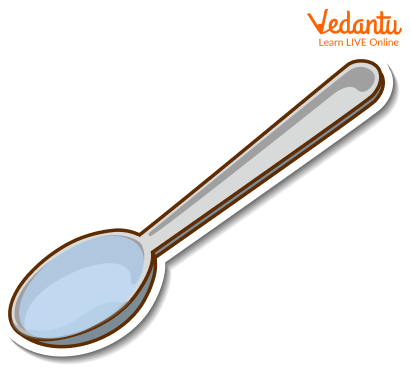
One teaspoon of liquid makes about 5 millilitres
How is Millilitre Written in Short?
In short, millilitres are often written as Ml or ML. Hence, 100 Ml or ML is written as 100 millilitres.
Note:
One millilitre is also equivalent to 1 cubic centimetre.
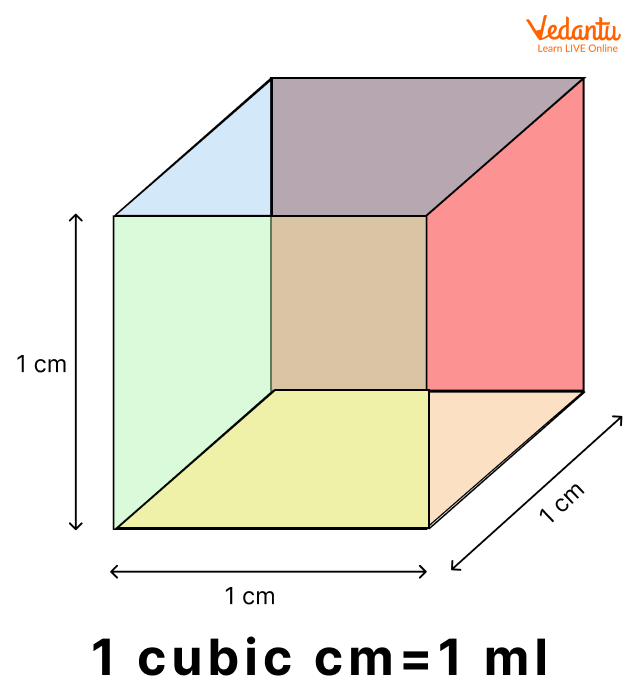
1ml = 1 cubic cm
In other words, we can say 1 millilitre is the same as a little cube that is 1 cm on each side (1 cubic centimetre).
What is Litre?
A litre is another basic metric unit that is used to measure the capacity of liquid. The figure below shows the 1 litre of water in a jug.
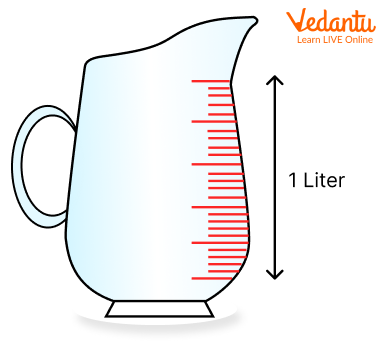
Jug with 1 litre of water
How is Litre Written in Short?
In short, litre is often written as L or l. Hence, 3 L or 3l means 3 litres.
Milk, soda, juices, and other drinks are often sold in litres.
Note:
1 litre is equal to one cubic decimetre, or 1 L = 1 dm³.
1 cube is equivalent to 0.1 metres or 10 cm or 10 mm on each side containing 1 litre.
A square metre i.e. 1 millilitre thick also contains 1 litre.
Other Liquid Measurements
Cubic Millilitre
A cube with one millimetre on each side is equivalent to 1 cubic millilitre. Hence, we need 1000 cubic millimetres to make 1 cubic millilitre. 1 cubic millilitre is also equal to one-millionth of a litre or one-billionth of a cubic metre.
Cubic Centimetre
1 cubic centimetre, written as cm³, which is a cube that is 1 cm on each side. It is also equivalent to 1 ML. Hence, 1 cm³ = 1 ML.
1 cubic centimetre is also one-thousandth of a litre or one-millionth of a cubic metre.
Decilitre
A decilitre, written as dl, is 1/10 of a litre or 100 ml. Hence, 1 dl = 100 ml.
Cubic Metre
1 Cubic metre, written as m³, is a cube with 1 metre on each side. Also, 1 m³ = 1000 litres.
Megalitre
1 Megalitre, written as ML, is useful for measuring large quantities of water, such as in dams or in small lakes. 1 megalitre is one million litres or 1 megalitres = 1,000,000 litres. Also, 1 megalitre (ML) = 1000 m³.
Cubic Kilometre
A Cubic Kilometre is useful for measuring large lakes, seas, and oceans. It is written as Km³, is a cube that is 1 Kilometre on each side. 1 Cubic Kilometre is equivalent to 1 billion m³. It can also be written as 1 Km³ = 1,000,000,000 cubic metres.
Liquid Measurement Tools
The different tools for measuring liquid are:
Measuring cups and pitchers
Laboratory essentials
Measuring Cups and Pitchers: We generally use cups and pitchers with markings in the kitchen to measure the quantity of liquid. The pictures given below show different cups and pitchers in the kitchen.
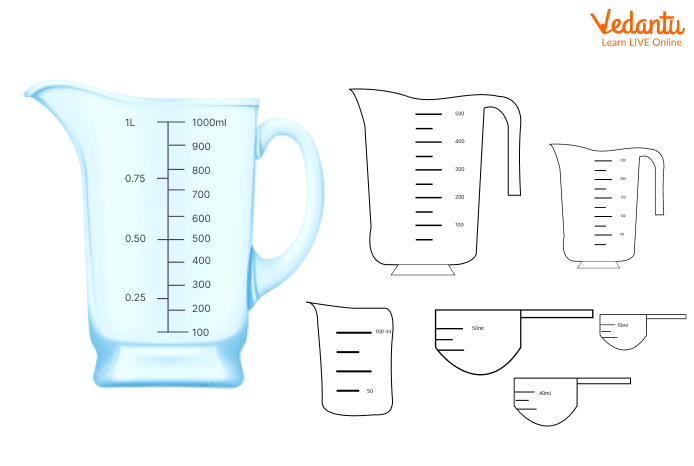
Measuring cups
Laboratory Essentials: The liquid measurement equipment such as beakers, conical flask, test tubes, and graduated cylinders with permanent markings in metric or customary are used to measure liquids precisely for performing tests with chemicals and other liquid compounds. The picture given below shows a few laboratory essentials with markings.
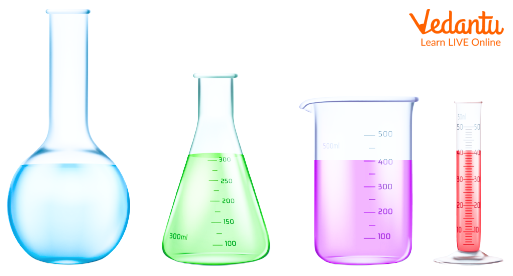
Laboratory Essentials
Common Metric and US Metric Conversion for Measuring Liquids
The table below shows some common metric and US metric conversions for measuring the volume of liquids.
Did You Know?
The Pacific ocean holds almost 700,000,000 Km³ of water.
Lake Bikanel, widely known as the largest continental lake in the world, holds almost 23,600 Km³ of water.
1 tablespoon is equivalent to 3 teaspoons of 15 millilitres.
1 litre is very close to the volume of a kilogram of water.
A millilitre is about the size of a grape.
Conclusion
In short, liquid measurement is defined as the amount of liquid a vessel holds and its measurement in standard units. In other words, it is also referred to as the volume or amount of vessel. Infant milk bottle with a millimetre marking is an example of liquid measurement.
FAQs on Liquid Measurement - Different Units to Measure Liquids
1. What does 'liquid measurement' mean in simple terms?
Liquid measurement is the way we find out how much space a liquid takes up. This is also called its volume or capacity. For example, it helps us know how much milk is in a carton, water in a bottle, or juice in a glass.
2. What are the two main units used to measure liquids?
The two most common standard units we use to measure liquids are:
- Litre (L): This is used for measuring larger amounts of liquid, like a big bottle of water or a full jug of juice.
- Millilitre (mL): This is used for smaller amounts, like a spoonful of medicine or a small cup of tea.
3. How are litres and millilitres related to each other?
A litre is a much bigger unit than a millilitre. The connection is very simple: 1 litre is equal to 1,000 millilitres. So, if you have a 1-litre bottle of water, it contains 1,000 mL of water.
4. What common tools can we use to measure liquids at home or in school?
To measure liquids accurately, we use special containers that have measurement markings on them. Common examples include measuring cups, measuring jugs, and measuring spoons. In a science lab, more precise tools like graduated cylinders are used.
5. When should you use millilitres (mL) instead of litres (L) to describe a volume?
You should use millilitres (mL) when talking about small quantities of liquid that are less than a litre. For instance, a dose of cough syrup, the amount of vanilla extract for a cake, or a can of juice are all best measured in mL. Litres (L) are more suitable for larger quantities like water in a fish tank or fuel in a car.
6. Why can't we use a ruler to measure the amount of juice in a glass?
A ruler is designed to measure length (how long something is), not volume or capacity (how much space a liquid fills). To find out the amount of juice, you need a tool that measures volume, like a measuring cup. A ruler can only tell you the height of the juice in the glass, not the total amount.
7. How can you estimate the capacity of a container without any measuring tools?
You can estimate capacity by comparing the container to an object with a known volume. For example, a standard small water bottle is usually 500 mL (half a litre), and a large milk carton is often 1 Litre. By mentally comparing your container to these items, you can make a good guess about its capacity.









